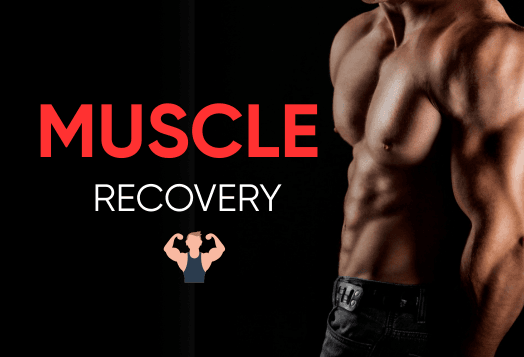
Struggling to bounce back after a tough workout? You’re not alone. Muscle recovery is where real progress happens. It’s key to building strength, avoiding injury, and training smarter. That deep soreness that makes stairs feel impossible is your body asking for rest. Learn what muscle recovery is and how to speed up muscle strain recovery for faster gains and fewer setbacks.
What is Muscle Recovery?
You’ve heard the phrase a hundred times, but what is muscle recovery exactly? Muscle recovery is the process your muscles undergo to heal, rebuild, and grow stronger after exercise. Every rep, lift, or sprint creates tiny tears in muscle fibers. Recovery is how your body repairs those tears, making your muscles more resilient over time.
The Three Phases of Recovery:
Inflammation: The body’s natural response to tissue damage.
Repair: Muscle fibers are rebuilt using protein and nutrients.
Growth: Repaired muscles adapt and grow stronger.
Understanding the importance of muscle recovery is crucial. It’s the bridge between today’s effort and tomorrow’s progress. Skipping it? That’s like building a house without letting the cement dry.
Techniques to Speed Up Muscle Recovery

Want to feel fresh and ready instead of drained and sore? Let’s explore the smartest ways to maximize recovery and minimize downtime.
1. Fuel Your Body Right
After training, your muscles are craving nutrients. To kickstart muscle recovery, focus on:
Protein to rebuild muscle tissue
Carbohydrates to replenish glycogen stores
Fluids to rehydrate and flush out waste
Proper nutrition is one of the most overlooked tools for speeding up muscle strain recovery. Think of your post-workout meal as your repair kit.
2. Priorities Active Recovery
Gentle movement helps. Walking, light cycling, or swimming keeps blood circulating and encourages faster healing. Active recovery reduces soreness and is one of the most effective techniques to speed up muscle strain recovery without adding stress.
3. Don’t Skimp on Sleep
Want to know what works better than another supplement? Sleep. Deep, uninterrupted rest allows your body to repair damaged tissues and balance hormones. Poor sleep leads to longer muscle recovery time and weaker performance.
4. Foam Rolling & Massage
Foam rolling or getting a massage helps ease tension, break down knots, and increase blood flow to sore areas. It’s a game-changer in post-workout recovery routines.
5. Stretch It Out
Mobility work and static stretching, such as chest stretches, reduce stiffness, improve flexibility, and prepare your muscles for your next session. It’s a simple but essential part of every recovery strategy.
How Long Does Muscle Recovery Take?
How long does muscle recovery take? The answer depends on your workout type, intensity, and personal fitness level.
Average Muscle Recovery Time:
Light workouts: 24–48 hours
Heavy strength training: 48–72 hours
High-intensity leg days: Up to 5 days
Your muscle recovery time will vary depending on several factors. Training sore muscles too soon can lead to poor form, overtraining, and even injury.
Factors That Impact Recovery:
Age – Recovery slows with age
Sleep quality – Less sleep = less repair
Nutrition – Incomplete meals delay healing
Stress – High stress levels can increase cortisol, slowing down recovery
If you're wondering how long to rest between workouts, start with 48 hours per muscle group and adjust based on how your body feels. That sweet spot helps manage muscle recovery time while still making progress.
Why Muscle Recovery Matters in Fitness
It’s easy to glorify non-stop training. But fitness isn’t just about what you do in the gym—it’s also about what you do after.
1. Prevents Overuse Injuries
Without proper rest, you run the risk of developing injuries like muscle strains, tendonitis, or joint issues, which can be mitigated with exercises for injury prevention. That’s why the importance of muscle recovery goes far beyond soreness—it’s about safety and sustainability.
2. Boosts Performance
Want to lift more? Run longer? Move faster? That won’t happen unless your muscles are fully healed and ready. Muscle recovery improves coordination, strength, and endurance by allowing your body to function at full capacity.
3. Drives Growth and Strength Gains
Muscles don’t grow in the gym, they grow during recovery. Incorporating dedicated rest time is one of the smartest ways to gain lean muscle and boost performance over the long haul. That’s the core reason why the importance of muscle recovery keeps coming up in every professional training program.
And here’s the thing: if your muscle recovery time is constantly extended, meaning you're sore for days or constantly tired, something's off. Your body is telling you it needs better support.
Recovery Is Where the Real Gains Happen
Muscle pain isn’t a badge of honour, it’s a signal. If you’re serious about growing stronger, leaner, and more capable, muscle recovery should be just as important as your training schedule.
Now that you know what muscle recovery is, how it works, and how to speed up muscle strain recovery, you’re equipped to train smarter. From nutrient timing and foam rolling to prioritizing sleep and active recovery, these aren’t just "nice-to-haves", they’re essentials.
And remember, your progress doesn’t come from pushing harder every single day. It comes from understanding the balance between effort and rest; you can take help from professional fitness trainers to get that balance. That’s the sweet spot for long-term fitness.




